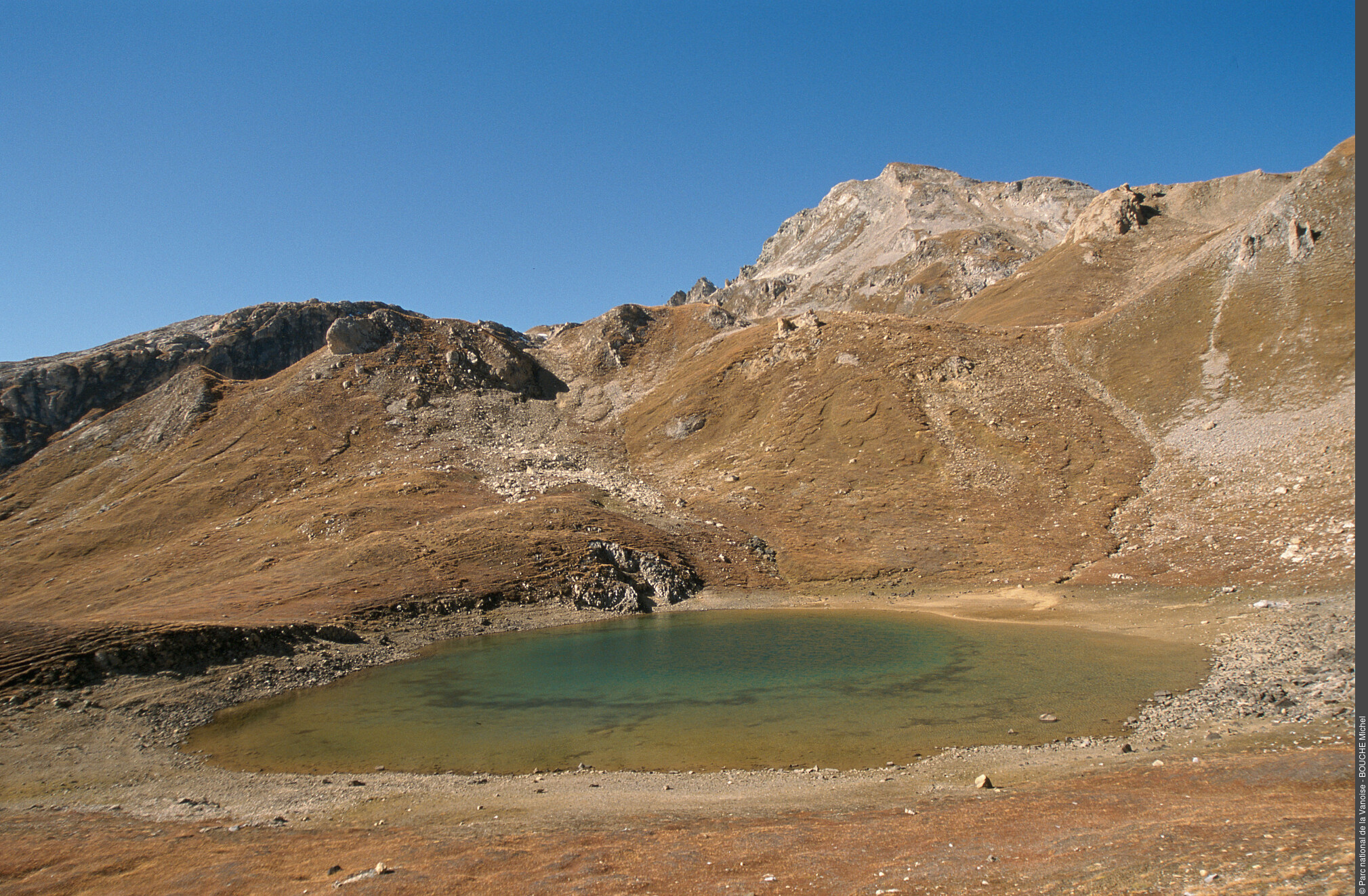
Col de la Bailletta from le Fornet
Description
- Departure : Car park, hamlet of Fornet
- Arrival : Car park, hamlet of Fornet
- Towns crossed : VAL D'ISERE and TIGNES
Forecast
Altimetric profile
Sensitive areas
Alpine ibex - winter
- Impacted practices:
- Aerial, Land, Vertical
- Sensitivity periods:
- JanFebMarDec
- Contact:
Parc national de la Vanoise - Elodie Antoine -
elodie.antoine@vanoise-parcnational.fr
04 79 06 03 15
Recommandations
Information desks
Tourist Information Office - Tignes
Maison de Tignes-le-lac BP 51, 73321 Tignes
Vanoise Information Desk - Val d'Isère
Immeuble le Thovex, Office de tourisme, 73150 Val-d'Isère
Transport
Then transport by coach to the administrative centre of Val d´Isère. Information: www.transavoie.com
Free shuttle buses serve all the hamlets of Val d´Isère, including le Fornet."
Access and parking
Parking :
More information
10 points of interest
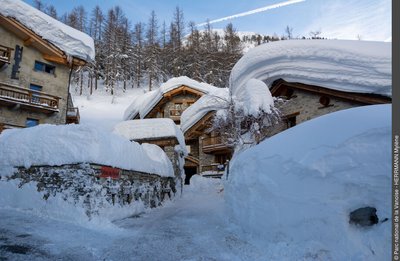
Le Fornet sous la neige - Mylène HERRMANN  Architecture
ArchitectureThe tourne
The historic Fornet is located on the left bank of the Isère which keeps it protected from avalanches and rock falls. The extension of the Fornet on the right bank, where you stand, was only allowed with the construction of this tourne (mound + ditch) against avalanches and rock falls. Also notice the absence of walls that face its slopes. In the eighteenth century, the Fornet d´Aval, between the Laisinant and the current Fornet, was completely destroyed by an avalanche. The ruins remain visible.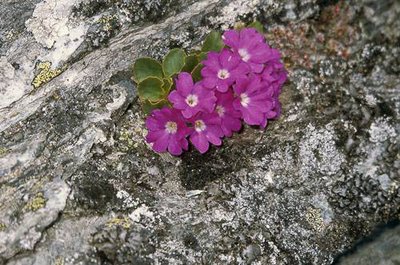
Primevère du Piémont. - PNV - BALAIS Christian  Flora
FloraPrimula pedemontana
The Primula pedemontana is recognisable in the spring by its beautiful pink flowers and edged leaves and small red glands, which distinguish it from its cousin, the Primula hirsuta. It is a species that lives on siliceous rocks, like quartzite (white-green rock) overhead. It is a protected species at the national level and, as such, cannot be picked. In the nature reserve, all vegetation is protected. Ÿou can touch it with your eyes and nose!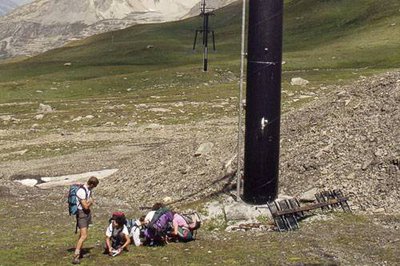
Agents du PNV en tournée flore : étude de la flore au pied d'un pylône du télésiège dit "de l'Iseran". - PNV - GOTTI Christophe  History
HistoryThe history of the Baillettaz Natural Reserve
The Baillettaz National Nature Reserve was created in 2000, following the complete decommissioning of the Col de l´Iseran Nature Reserve (created in 1963), in order to reclassify the valley´s ski area. It covers an area of approximately 495 ha. Its natural heritage consists mainly of flora, large fauna (chamois and ibex), as well as birds of prey (golden eagle, bearded vulture and common kestrel).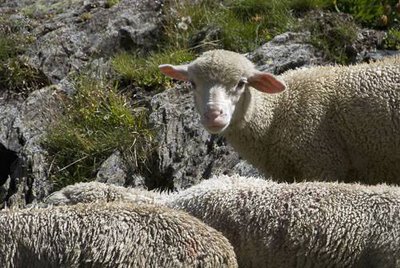
Moutons en pâture. - PNV - STORCK Frantz  Pastoralism
PastoralismAgricultural practices
Ÿou arrive at the level of the 1st plateau called “Couart dessous”. The dry-stone walled park was once used to pen the flock for the night. Until the end of the 1990s, there was a communal flock of sheep, containing around 800 animals owned by several Val d´Isère farmers. With the change of pastoral practices, this flock was replaced by a private herd from Aiton, part of which is still owned by Christophe Mattis, who resides in Fornet.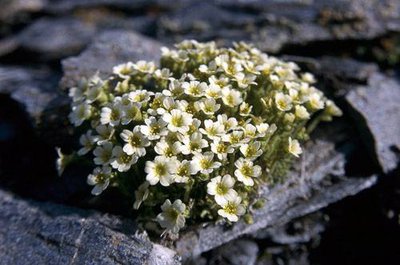
Saxifrage fausse mousse. - PNV - BALAIS Christian  Flora
FloraThe flora of the reserve
The majority of the reserve’s natural habitats are either attached to alpine grasslands or to rocks and screes, as well as some rare wetlands. The heritage species, often protected, include the carex bicolor on the wetlands, the saxifraga diapensioides on the limestone cliffs, Saxifraga muscoides on the screes and damp calcschist cliffs. Kœlerie of Mont-Cenis (Kœleria cenisia) is a fine example of the flora that grows on the reserve’s dry, scorched limestone grasslands.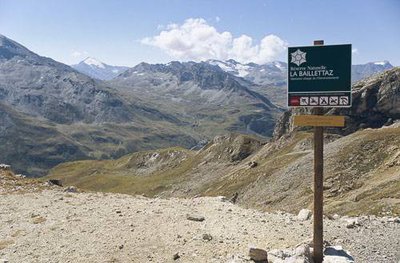
Col de la Ballettaz. - PNV  History
HistoryThe Vaudois passage
The mountain pass before you is that of Iseran. The road was opened in 1937. Prior to this road, only a mule track existed. The passage of man can be traced to the Roman era, with coins and a statuette found in Val d´Isère. Some crossings have even left their mark on history. In 1689, the Vaudois (an austere Christian minority who took refuge in Switzerland) wanted to return to their asylum grounds (4 Italian valleys, adjoining the Queyras) and passed with weapons and baggage. No one intervened despite the orders given!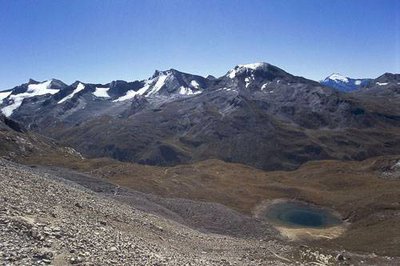
Vue sur le Lac de la Bailletta. - PNV - BOUCHE Michel  Viewpoint
ViewpointPanoramic view
Before you, you can see from west to east: the Pointe Pers (3,327 m in altitude) and the Signal de l´Iseran (3,237 m in altitude) to the left of the Col de l´Iseran (2,764 m in altitude). The Pointe du Charbonnel and glacier (3,752 m in altitude) at the back of the pass, in Maurienne and the crest of Leissières (3,043 m in altitude) to the right of the pass. Then to the right of the Leissières crest, the Pointe de Méan Martin (3,330 m in altitude) and the Pointes du Châtelard (3,378 m in altitude) and respective glaciers.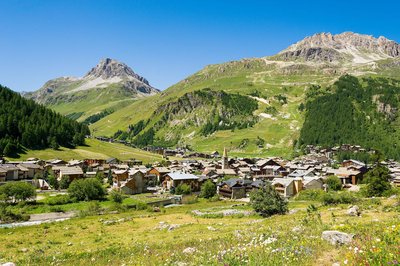
Le village de Val d'Isère - Andy Parant  History
HistoryVal d'Isère village
It all began back in 1888 when the first hotel opened in Val d'Isère. Skiing became fashionable from the 1930s, and Val d'Isère soon established itself as a leading destination (the ski school opened, its first ski lift opened and the Col de l'Iseran mountain pass road opened). Winter sports really took off after World War II and Val d’Isère became a world-class resort thanks to its unique ski area and the authentic charm of its village. In 1955 it launched the Criterium de la Première Neige, a mythical downhill ski race, followed by other renowned competitions. The traditional Savoyard architecture showcases local materials: stone, timber, metal and lauze slate. Although timber chalets are still the best-known mountain house, the architecture in Val d’Isère also features a range of other types. Most chalets in Val d'Isère have been built in keeping with the traditional style and the different hamlets across the resort (Le Joseray, Le Fornet, Le Crêt, etc.) all harbour architectural secrets that are well worth uncovering on outings.
Guided tours of the resort are organised by the Tourist Office.
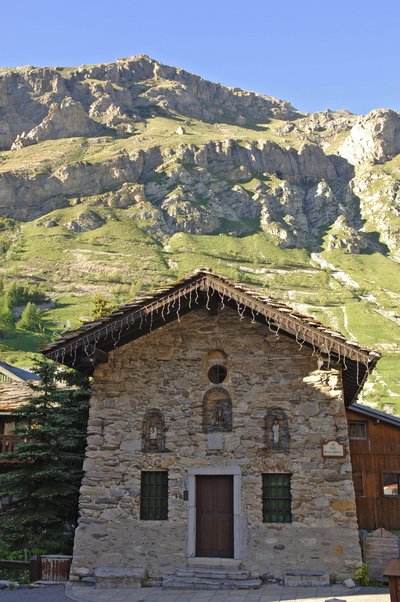
La chapelle Saint Roch - Val d'Isère Tourisme  Small heritage
Small heritageSt Roch’s Chapel
St Roch’s Chapel stands on the square, a stone’s throw from the church. For a long time, the headrace that brought water to the adjacent mill flowed right in front of the chapel! (You can still see a millstone standing on the side). St Roch, Joan of Arc and the vicar of Ars can be seen in the recesses (the old statues were stolen). This chapel is mentioned during the pastoral visit in 1633. In 1790, a lawyer in Turin by the name of Boch gave a donation to enable 51 services to be held a year, i.e. one every Friday (what did he fear for the community and for himself we might wonder?). Nowadays, this chapel is still used as a chapel of rest.
Who was St Roch?
St Roch’s feast day is celebrated on 16 August. He was a hermit who spent his time embarking on pilgrimages. Often associated with St Sebastian, St Roch is invoked against plague. Veneration of him began to spread across Savoie in the mid 15th century, swiftly gaining ground through the 16th and 17th centuries, before almost completely disappearing in the 18th century. Plague was a terrible disease. Its pandemics took a devastating toll on populations. Yersin’s bacillus, the vector of the disease, was not identified until the 19th century. Rats carried the bacillus, and fleas, moving from the rats to humans, contaminated the population. In our mountain communities, which were crawling with hawkers, mule-drivers, merchants and smugglers, it’s hardly surprising that the disease often blighted the local populations. All it took was for a flea carrying the bacillus to jump inside the lapel of a cloak and the disease was there…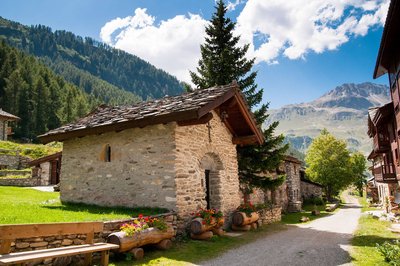
La chapelle Sainte-Lucie aux Branges - Val d'Isère Tourisme  Small heritage
Small heritageSainte-Lucie aux Branges Chapel
At the time it was mentioned during the pastoral visit in 1633, this chapel was dedicated to St Francis of Assisi. The painting showing the stigmata of St Francis now hangs in St Roch’s Chapel. In the 18th century, it would be dedicated to St Lucy. In 1790, Mass was celebrated there for her feast day. The chapel was restored by Guy Turbil, who owned the house next door, in 1971. There were once several houses in the hamlet or village of Les Branges. This name refers to larch trees in local dialect.
Who is St Lucy?
Born into a very wealthy noble family from Syracuse, Lucy (who died between 303 and 310) lived with her mother Eutychia and venerated St Agatha. As her mother suffered from an inflammatory bowel syndrome and blood loss, one day Lucy decided to take her to Agatha’s tomb, in Catania, to ask for healing. The next day, Eutychia recovered. Following this healing, Lucy asked her mother’s permission to distribute to the poor everything that her father had left her. Both women then began giving all that they owned to the poor, a little each day. But Eutychia had promised Lucy’s hand in marriage to a young man who flew into a fit of rage when he heard that his fiancée wished to remain a virgin and was selling her fortune, which he had his eyes on, to give to the poor. So he denounced her to the Consul Pascasius, as an enemy of the deities of the Roman Empire. Refusing to give up her Christian faith, Lucy was sent to a brothel then martyred. Her name comes from the Latin word lux (which means light), and that is why she is associated with many festivals of light.
